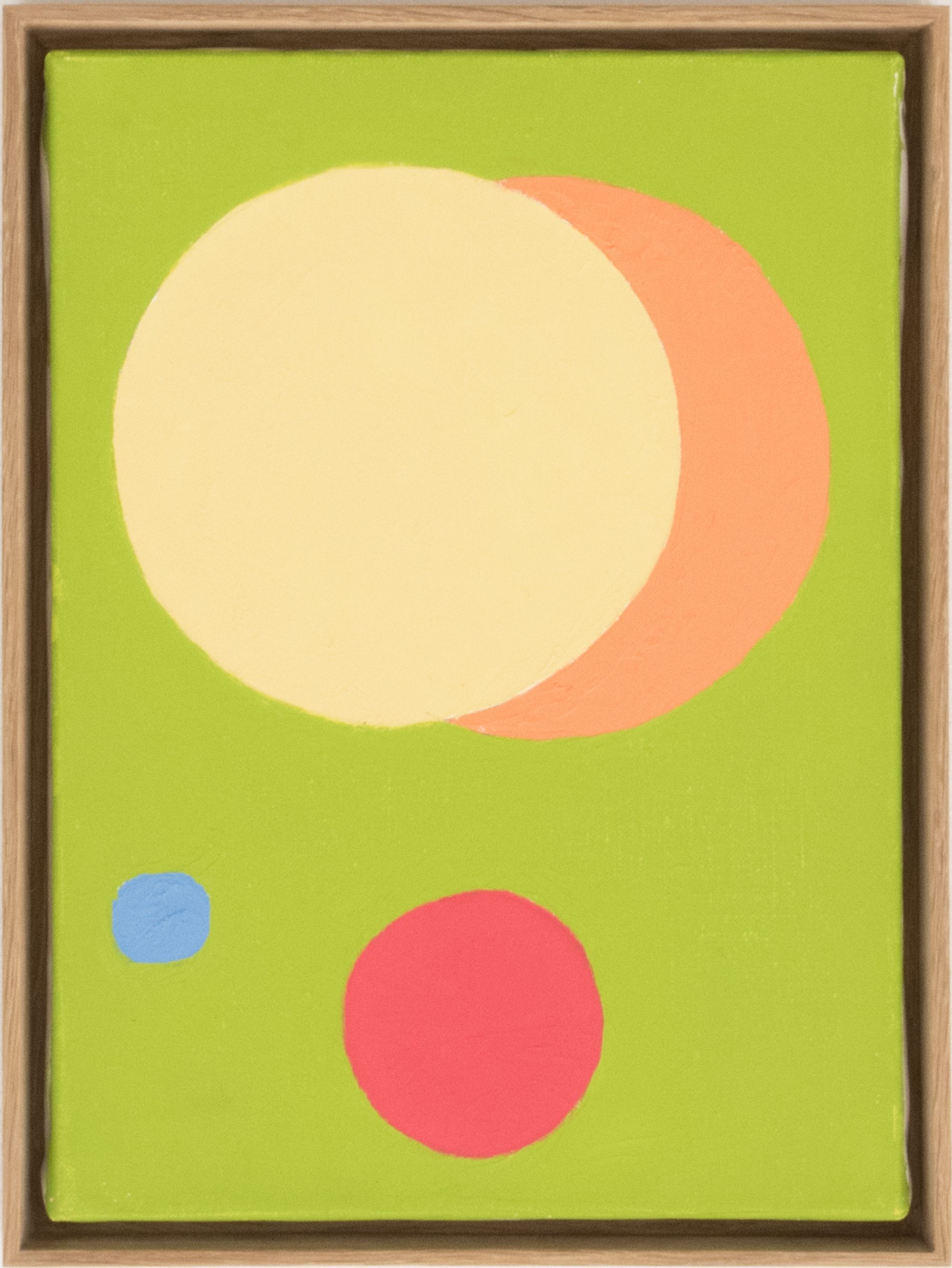エテル・アドナン
Etel Adnan

無題
2017年
油彩、キャンバス
33 x 24 cm
作家蔵
Untitled
2017
Oil on canvas
33 x 24 cmm
Collection of the artist
Courtesy: Sfeir-Semler Gallery, Beirut/Hamburg
無題
2017年
油彩、キャンバス
33 x 24 cm
作家蔵
アドナンは、自身が詩を書くときに使うノートに近いサイズのキャンバスをテーブルに載せ、インクや絵具で風景画を描きます。絵具はチューブから直接出し、パレットナイフを使い、画面に厚く塗ります。主な題材は、彼女の母国レバノンの風景と、第二の故郷である北カリフォルニアの風景、特に自宅の窓から見えていたタマルパイス山やサンフランシスコ湾などです。季節を問わず変化する自然の情緒と偉大さを描き続けています。
ほぼ独学で絵画を習得したアドナンは、抽象的な図形と直線を組み合わせ、実際の色ではなく、彼女が体験した時間や場所の情感を表す色彩で、海や山、空を描きます。彼女の感覚と経験を詩的な印象をもって表現する、柔らかな色合いの絵画は、人生の喜びや、生きる幸せを感じさせてくれるようです。
Untitled
2017
Oil on canvas
33 x 24 cm
Collection of the artist
Courtesy: Sfeir-Semler Gallery, Beirut/Hamburg
Adnan paints landscapes with ink and pigment on canvases similar in size to the notebooks she uses to write poetry that have been placed on a table. Using a palette knife, she squeezes paint directly from the tube and applies it thickly to the canvas. Her main subjects are the landscapes of her native Lebanon and her second home in Northern California, especially Mount Tamalpais and San Francisco Bay, which she used to see from the window of her house. She continues to paint the ever-changing moods and majesty of nature regardless of the season.
Adnan, who is largely a self-taught painter, combines abstract shapes and straight lines in order to depict the ocean, mountains, and sky with colors that represent the emotions associated with the time and place that she has experienced, rather than the actual colors. Her softly colored paintings, which articulate her sensations and experiences with a sense of poetry, seem to evoke the joy of life.

無題(木々)
2012年
レポレッロ(折本)、インク、紙
21.5×9.3×4 cm(全幅540 cm、60頁)
作家蔵
Untitled (Trees)
2012
Leporello, ink on paper
21.5 x 9.3 x 4 cm (maximum width: 540 cm, 60 pages)
Collection of the artist
Courtesy: Sfeir-Semler Gallery, Beirut/Hamburg
無題(木々)
2012年
レポレッロ(折本)、インク、紙
21.5×9.3×4 cm(全幅540 cm、60頁)
作家蔵
アコーディオンのような折本「レポレッロ」を使った作品は1960年代から、絵画と同じく風景を題材に作られ始めました。アドナン自身の詩をアラビア語に訳したものや、英語やフランス語のテキストも用いられています。制作のきっかけは、サンフランシスコ・アジア美術館で目にした日本の折本などだったといいます。
レポレッロの語源は、モーツァルト(1756-1791年)のオペラ「ドン・ジョバンニ」(1787年)に由来しますが、蛇腹折りの本は古くから中国および日本にも存在し、それがアラブ経由でヨーロッパへ伝わったものです。ページをめくりながら見る絵画であるレポレッロは、文字も視覚表現に用いられるアラブ美術に通ずるとともに、その成り立ちは歴史と地域を横断しています。それはレバノンで生まれ、フランスそしてアメリカへと渡り、小説家、詩人、アーティストとして活躍する作家自身の遍歴と重なります。
Untitled (Trees)
2012
Leporello, ink on paper
21.5 x 9.3 x 4 cm (maximum width: 540 cm, 60 pages)
Collection of the artist
Courtesy: Sfeir-Semler Gallery, Beirut/Hamburg
In the 1960s, Adnan began to use accordion-like folded books called leporello to create works based on landscapes as well as paintings. Adnan’s own poetry translated into Arabic, as well as English and French texts have also been used. The inspiration for this work came from a Japanese folded book that she had seen at the Asian Art Museum of San Francisco.
The word leporello originates from Mozart’s (1756-1791) opera Don Giovanni (1787), but this accordion-pleated book has existed in China and Japan since ancient times, and was introduced to Europe via the Arab world. Leporello, a kind of painting that is viewed by turning the pages, bears a similarity to Arab art, where text is also used as an element of visual expression, while also transcending history and geography. It overlaps with the history of the artist herself, who was born in Lebanon, moved to France and then to the United States, and is active as a novelist, poet, and artist.
アーティスト一覧ARTISTS
- Etel Adnan|エテル・アドナン
- Phyllida Barlow|フィリダ・バーロウ
- Anna Boghiguian|アンナ・ボギギアン
- Miriam Cahn|ミリアム・カーン
- Lili Dujourie|リリ・デュジュリー
- Anna Bella Geiger|アンナ・ベラ・ガイゲル
- Beatriz González|ベアトリス・ゴンザレス
- Carmen Herrera|カルメン・ヘレラ
- Kim Soun-Gui|キム・スンギ
- Suzanne Lacy|スザンヌ・レイシー
- Mishima Kimiyo|三島喜美代
- Miyamoto Kazuko|宮本和子
- Senga Nengudi|センガ・ネングディ
- Nunung WS|ヌヌンWS
- Arpita Singh|アルピタ・シン
- Robin White|ロビン・ホワイト

